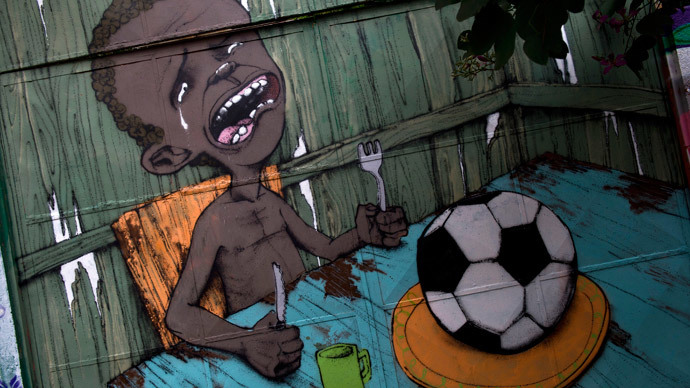
Street artists have covered walls in Rio de Janeiro and Sao Paulo with pictures which blame football's governing body, FIFA, for exploiting Brazil and the local government for neglecting the needs of the poor.
They share the belief that the US $11 billon which has been spent on the World Cup should have been used to improving transportation, healthcare, and education.
"It's a good way to expose the country's problems," graffiti artist Paulo Ito told the Guardian. "If the government doesn't want to expose these things it's because they feel ashamed. If they feel ashamed by this they might take it more seriously - at least, that's our intention."
Despite the Brazilians' passion for football, over one million people took to the streets across the country last year demanding the cancelation of the World Cup.
The people's outrage is only increasing as the tournament draws nearer - even Brazil's training session ahead of the event was marred by protests.
Meanwhile, graffiti that celebrates the upcoming tournament and the country's football heroes - who will be hoping for their sixth world title at the home event - is being vandalized.
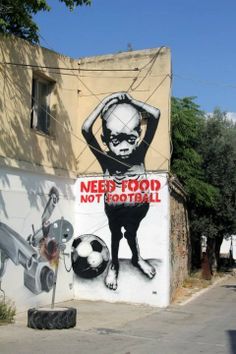
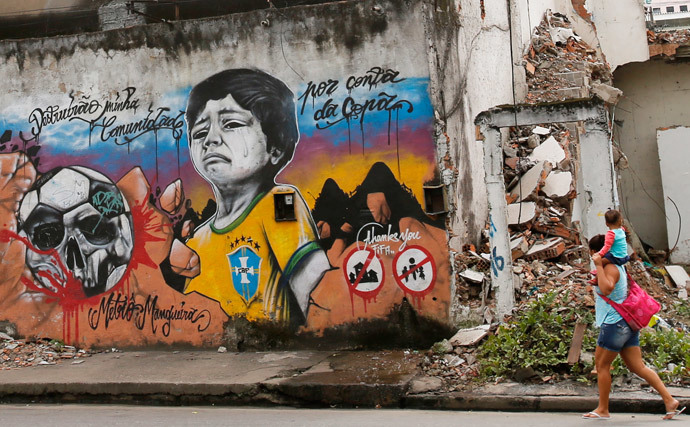

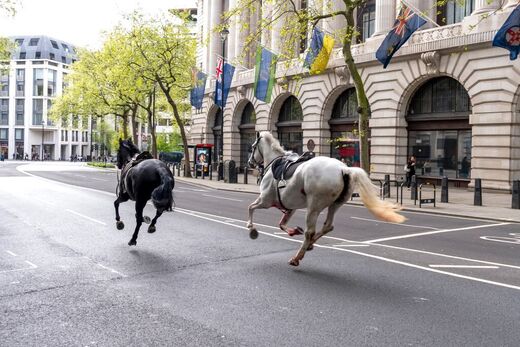
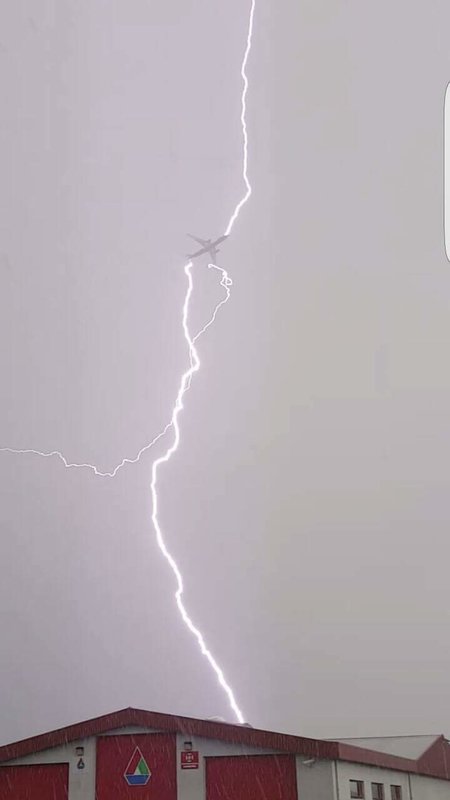
One should also not dismiss an American wish/attempt at regime change in Brazil and thereby weakening the BRICS countries' cooperation.
There are lots of unresolved problems in Brazil and nothing is easier from outside ngo's than to fuel this discontent and see how all of a sudden there are street protests with demands of a new government. Choose a color, ramp up the media, add a few hidden snipers and bingo you have a regime change. And what better time to choose than when the international spotlight will be on Brazil to push those plans a bit further. During the football world cup the hands of the Brazilian government are tied, much like Russia's hands during the Olympics.
It is a proven formula, and the US would dearly like to have a strong ally in South America to divide the continent and put up more military bases there. It is after all the world hegemony that is at play.